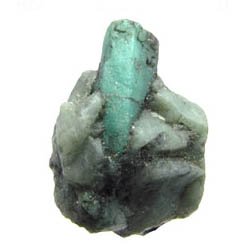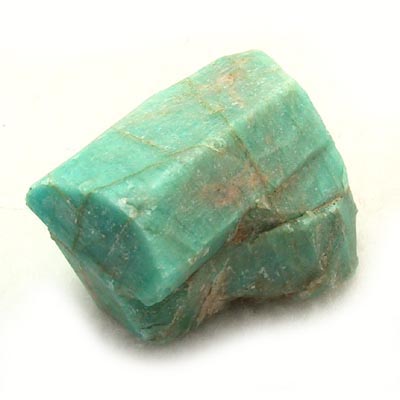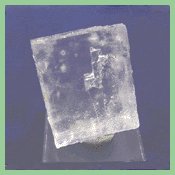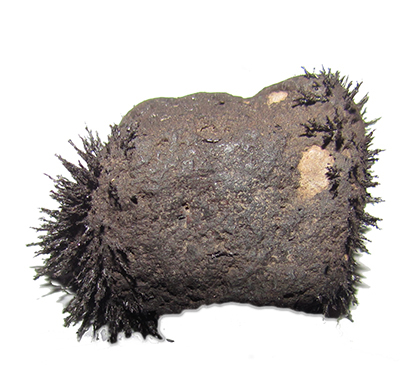Sign up for Lesson Plans, discounts & more!
Properties of Minerals

The Physical properties of minerals are used by Mineralogists to help determine the identity of a specimen. Some of the tests can be performed easily in the field, while others require laboratory equipment. For the beginning student of geology, there are a number of simple tests that can be used with a good degree of accuracy. The list of tests is in a suggested order, progressing from simple experimentation and observation to more complicated either in procedure or concept.
Most books about minerals list these characteristic for each mineral.
Properties of Minerals
The following physical properties of minerals can be easily used to identify a mineral:
- Color
- Streak
- Hardness
- Cleavage or Fracture
- Crystalline Structure
- Diaphaneity or Amount of Transparency
- Tenacity
- Magnetism
- Luster
- Odor
- Taste
- Specific Gravity
Properties of Minerals A Detailed Description
Color
Most minerals have a distinctive color that can be used for identification. In opaque minerals, the color tends to be more consistent, so learning the colors associated with these minerals can be very helpful in identification. Translucent to transparent minerals have a much more varied degree of color due to the presence of trace minerals. Therefore, color alone is not reliable as a single identifying characteristic.
Streak
Streak is the color of the mineral in powdered form. Streak shows the true color of the mineral. In large solid form, trace minerals can change the color appearance of a mineral by reflecting the light in a certain way. Trace minerals have little influence on the reflection of the small powdery particles of the streak.
The streak of metallic minerals tends to appear dark because the small particles of the streak absorb the light hitting them. Non-metallic particles tend to reflect most of the light so they appear lighter in color or almost white.
Because streak is a more accurate illustration of the mineral’s color, streak is a more reliable property of minerals than color for identification.
Streak Test
To test the streak color of a mineral you need a streak plate. A streak plate is just a ceramic, unglazed tile. To test a mineral rub the specimen across the tile as if trying to make a scratch. Observe the color the residue left on the tile.
Hardness
Hardness is one of the better properties of minerals to use for identifying a mineral. Hardness is a measure of the mineral’s resistance to scratching. The Mohs scale is a set of 10 minerals whose hardness is known. The softest mineral, talc, has a Mohs scale rating of one. Diamond is the hardest mineral and has a rating of ten. Softer minerals can be scratched by harder minerals because the forces that hold the crystals together are weaker and can be broken by the harder mineral.
The following is a listing of the minerals of the Mohs scale and their rating:
- Talc
- Gypsum
- Calcite
- Fluorite
- Apatite
- Orthoclase Feldspar
- Quartz
- Topaz
- Corundum
- Diamond
If you do not have the set of minerals listed above there are some common household items that can be used to get a good approximation.
- fingernail- 2 to 2.5 on the Mosh scale
- Copper penny or house wire-3 on the Mosh scale
- Glass-5.5 on the Mosh scale
- knife-5.5 to 6 on the Mosh scale
- Steel file-6.5 on the Mosh scale
- Streak plate (unglazed ceramic tile)- 6.5 to 7 on the Mosh scale
To preform the hardness test try to scratch one item with the other.
Cleavage & Fracture
Minerals tend to break along lines or smooth surfaces when hit sharply. Different minerals break in different ways showing different types of cleavage.
Cleavage is defined using two sets of criteria. The first set of criteria describes how easily the cleavage is obtained. Cleavage is considered perfect if it is easily obtained and the cleavage planes are easily distinguished. It is considered good if the cleavage is produced with some difficulty but has obvious cleavage planes. Finally it is considered imperfect if cleavage is obtained with difficulty and some of the planes are difficult to distinguish.
The second set of criteria is the direction of the cleavage surfaces. The names correspond to the shape formed by the cleavage surfaces: Cubic, rhombohedral, octahedral, dodecahedral, basal or prismatic. These criteria are defined specifically by the angles of the cleavage lines as indicated in the chart below:
Cleavage Type Angles
Cubic Cleaves in three directions @ 90o to one anotherRhombohedral Cleaves in three directions but not @ 90o to one anotherOctahedral Cleaves in four directionsDodecahedral Cleaves in six directionsBasal Cleaves in one directionPrismatic Cleaves in two directions
Fracture describes the quality of the cleavage surface. Most minerals display either uneven or grainy fracture, conchoidal (curved, shell-like lines) fracture, or hackly (rough, jagged) fracture.

Crystalline Structure
Mineral crystals occur in various shapes and sizes. The particular shape is determined by the arrangement of the atoms, molecules or ions that make up the crystal and how they are joined. This is called the crystal lattice. There are degrees of crystalline structure, in which the fibers of the crystal become increasingly difficult or impossible to see with the naked eye or the use of a hand lens. Microcrystalline and cryptocrystalline structures can only be viewed using high magnification. If there is no crystalline structure, it is called amorphous. However, there are very few amorphous crystals and these are only observed under extremely high magnification.
Transparency or Diaphaneity
Diaphaneity is a mineral’s degree of transparency or ability to allow light to pass through it. The degree of transparency may also depend on the thickness of the mineral.
To test for transparency hold the specimen up to the light. If you can see through it it is called transparent. If you put your finger behind the mineral and can see the shadow of your finger it is called translucent. If no light comes through it is called opaque.

Tenacity
Tenacity is the characteristic that describes how the particles of a mineral hold together or resist separation. Follow the link below to view the list of terms used to describe tenacity and a description of each term.
Magnetism
Magnetism is the characteristic that allows a mineral to attract or repel other magnetic materials. It can be difficult to determine the differences between the various types of magnetism, but it is worth knowing that there are distinctions made.

Luster
Luster is the property of minerals that indicates how much the surface of a mineral reflects light. The luster of a mineral is affected by the brilliance of the light used to observe the mineral surface. Luster of a mineral is described in the following terms:
Metallic The mineral is opaque and reflects light as a metal would.Submettalic The mineral is opaque and dull. The mineral is dark colored.Nonmettalic The mineral does not reflect light like a metal.
Nonmetallic minerals are described using modifiers that refer to commonly known qualities.
Waxy The mineral looks like paraffin or wax.Vitreous The mineral looks like broken glass.Pearly The mineral appears iridescent, like a pearl.Silky The mineral looks fibrous, like silk.Greasy The mineral looks like oil on water.Resinous The mineral looks like hardened tree sap (resin).Adamantine The mineral looks brilliant, like a diamond.
Odor
Most minerals have no odor unless they are acted upon in one of the following ways: moistened, heated, breathed upon, or rubbed.
Taste
Only soluble minerals have a taste, but it is very important that minerals not be placed in the mouth or on the tongue. You should not test for this property in the classroom.
Specific Gravity
Specific Gravity of a mineral is a comparison or ratio of the weight of the mineral to the weight of an equal amount of water. The weight of the equal amount of water is found by finding the difference between the weight of the mineral in air and the weight of the mineral in water.
Knowing the properties of minerals will help you to identify minerals in the field.
Follow this link for more on the Properties of Minerals

INTERESTED IN MORE? IF SO, YOU MAY WANT TO CHECK OUT OUR OTHER SITES:
fossilicious.com - Our online fossil and mineral rock shop.
fossils-facts-and-finds.com - An educational site about fossils.











